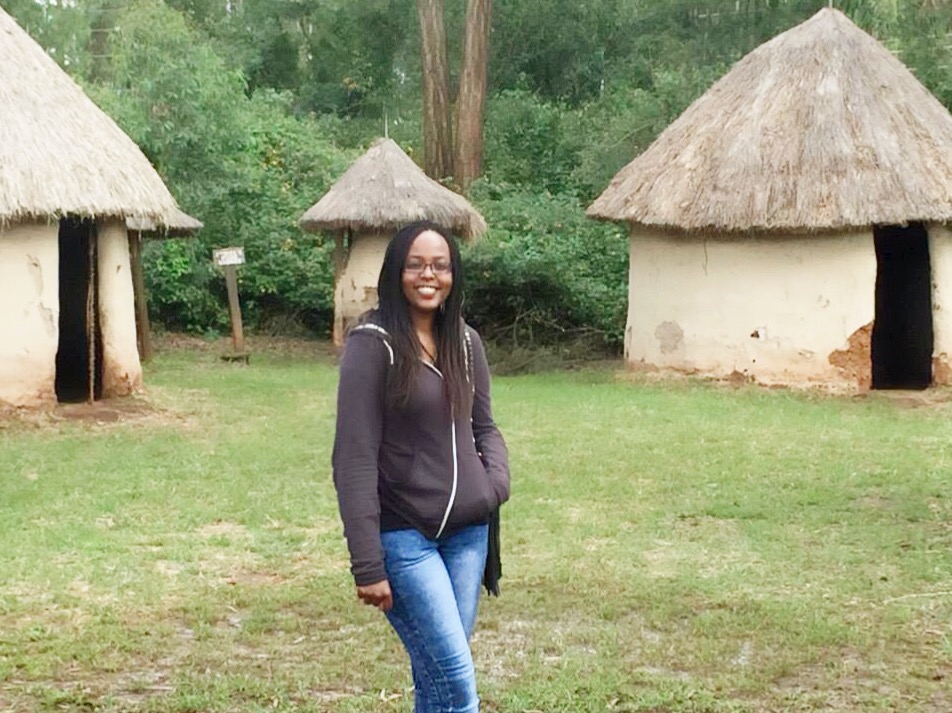So before the second visit to another national park, a short trip to bomas of Kenya was in store . The word 'boma' means homestead in Swahili. This is very evident from what is found in this bit of space tucked away in Langata, Nairobi. It is about 15-20 min drive from the Nairobi National Park- traffic permitting obviously.
Kenya is a multi-ethnic, multi-lingual country and therefore, while English and Swahili are our official languages ,we have at least 62 other languages!!languages...not dialects but languages....think German,French,Spanish,English...now 62 of those ! This obviously then brings the idea of different tribes ,their cultures and their traditions. While most have obviously moved away from the traditions owing to western influence and education a few here and there have maintained a couple. Some may be beneficial but the likes of female circumcision (mutilation) still being performed by one or two communities face serous criticism and there are various campaigns against this .
So back to bomas, we got to see the way our great grandparents lived. We are a very community focused nation and as such most homesteads comprised of various little huts belonging to different members of the family . We love to live together. In some cases, once a son was of age to marry , he simply put up a hut in his parents homestead and moved his wife in!
So back to bomas, we got to see the way our great grandparents lived. We are a very community focused nation and as such most homesteads comprised of various little huts belonging to different members of the family . We love to live together. In some cases, once a son was of age to marry , he simply put up a hut in his parents homestead and moved his wife in!
Most homesteads have a grandmother hut because it is pretty much an unspoken rule to care for our elders . She would often have the biggest hut in the homestead (best for story telling time).
Men were allowed to marry more than one wife and so the sizes of the huts would vary depending on what position you were in the list with the 1st wife obviously getting the biggest . This was probably because in most cases that was where everyone including the children would converge .
There would then be a hut for the husband (he would go to whichever wife he was 'visiting' for the night and then back to his hut to sleep) Some might argue that not much has changed in some cases on that...
Its surprising how well they all managed to live together and you apparently couldn't even tell whose child was whose as they were all treated fairly. It was seen as a show of wealth how many wives and children a man had because it obviously took a lot to maintain them. As times changed, these are some of the traditions that were done away with,thank heavens!! Plus in this day and age,it's not easy maintaining the one I suppose..The boys and girls obviously slept in different huts
A few bits here and there relating to marriage have still been kept though . This is mainly in regard to dowry . In my culture ,being kikuyu,It is still expected that a man visits a girls home to ask for her hand in marriage accompanied by his uncles, elders and friends and an agreement in regard to dowry (gift to the parents for raising such an amazing woman)is made. He then is expected to deliver a part of it on what is then the ceremony 'ngurario' which is pretty much a traditional wedding though not really recognised by law in Kenya and you can then plan a proper wedding and if not you can then take your wife home with you . You are to continue bringing the remaining part of the fiery in small bits and the idea is to keep the relations going with each visit . However not everyone still does this. It was a lot more dramatic back in the day anyway where they had a mock 'kidnapping' of the bride done . Strange but exciting I can imagine .
Anyway, you are also treated with a few traditional dances from various communities. I think we danced for everything ,child birth,initiation ,marriage, even harvest!! So it can be a bit interesting seeing the various costumes and dances though as mentioned , there are 62 languages , and much as they don't perform in all of them chances are you might only understand one or none of the words but can definitely follow the story.
It's worth a visit when in Nairobi I would say . A small part of tradition and if you are lucky to have a guide ,he can then give you the intricate details of each community and family setting while giving a distinction or similarity to modern day.
From there ,we were off to the great Rift Valley !!! Next blog.
Thanks for reading as always
xoxo
Ps- if you haven't voted yet I will really appreciate your vote simply by clicking the link below
http://www.faceofkenyauk.org/voting.html - Thanks for voting!!
www.justgiving.com/profile/teenagemothersrescue - Just giving fundraising
http://imarainternational.org/our-story/#.VysGrk32Zkg - IMARA INTERNATIONAL - MY CHARITY OF CHOICE
From there ,we were off to the great Rift Valley !!! Next blog.
Thanks for reading as always
xoxo
Ps- if you haven't voted yet I will really appreciate your vote simply by clicking the link below
http://www.faceofkenyauk.org/voting.html - Thanks for voting!!
www.justgiving.com/profile/teenagemothersrescue - Just giving fundraising
http://imarainternational.org/our-story/#.VysGrk32Zkg - IMARA INTERNATIONAL - MY CHARITY OF CHOICE










 RSS Feed
RSS Feed
